CLˆOTURE INTÉGRALE DES IDÉAUX ETÉQUISINGULARITÉ
CLˆOTURE INTÉGRALE DES IDÉAUX ETÉQUISINGULARITÉ
CLˆOTURE INTÉGRALE DES IDÉAUX ETÉQUISINGULARITÉ
Create successful ePaper yourself
Turn your PDF publications into a flip-book with our unique Google optimized e-Paper software.
Démonstration. — Soient U un ouvert de X, et f ∈ Γ(U, Ip/q ). Pour tout<br />
x ∈ U, ¯ν x p<br />
I (f) ≥ q , i.e. , ¯νIx(f · OX,x) ≥ p<br />
q , ce qui d’après (2.1) entraîne que pour<br />
tout x ′ ∈ π−1 (U), on a fq · OX ′ ,x ′ ⊂ Ip · OX ′ p<br />
,x ′, d’où : ¯νx′ I·O (f · OX ′) ≥<br />
X ′ q pour<br />
tout x ′ ∈ π −1 (U). Donc<br />
ce qui montre<br />
f · O X ′ |U ⊂ (I · O X ′ |U) p/q ,<br />
I p/q ⊂ π∗(I · OX ′)p/q ∩ OX.<br />
Réciproquement si f ∈ Γ(U, OX) est tel que f · O X ′ |U ⊂ (I · O X ′ |U) p/q , on a (2.1)<br />
f q · O X ′ |U ⊂ (I · O X ′ |U) p = (I · O X ′ |U) p<br />
puisque I · OX ′ est un idéal inversible d’un espace normal. Donc<br />
f q · O X ′ |U ⊂ I p · O X ′ |U<br />
ce qui, toujours d’après (2.1), signifie que pour tout x ∈ U<br />
f q · OX,x ⊂ I p · OX,x ,<br />
i.e. , ¯ν x p<br />
I (f) ≥ q , ∀x ∈ U et donc f ∈ Γ(U, Ip/q ). QED pour le lemme.<br />
4.2.6. Corollaire. — Soient X un espace analytique réduit et I un<br />
OX-idéal cohérent définissant un sous-espace rare dans X. Le OX-idéal Ip/q est<br />
cohérent, et son germe (Ip/q )x en un point x ∈ X est I p/q<br />
x = {f ∈ OX,x/¯νIx(f) ≥<br />
p/q}.<br />
Démonstration. — D’après 4.2.3.2, (I · OX ′)p/q est un OX ′-idéal cohérent ;<br />
puisque π : X ′ → X, éclatement normalisé de I, est propre, π∗(I · OX ′)p/q est un<br />
sous-OX-module cohérent du OX-module cohérent π∗OX ′, donc Ip/q , intersection<br />
de deux sous-OX-modules cohérents d’un OX-module cohérent, est cohérent.<br />
4.3. L’algèbre graduée P 1/q (I).<br />
4.3.0. Définition. — Soient X un espace analytique complexe réduit, I<br />
un OX-idéal cohérent et q un entier positif. On appelle algèbre des 1<br />
q-puissances de I la OX-algèbre<br />
P 1/q (I) = ⊕ ∞ p=0 Ip/q · T p/q ⊂ OX[T 1/q ]<br />
où OX[T 1/q ] désigne la OX-algèbre OX[T, U]/(T − U q ).<br />
4.3.1. Proposition. — Pour tout entier positif q, la OX-algèbre graduée<br />
P 1/q (I) est de présentation finie.<br />
37




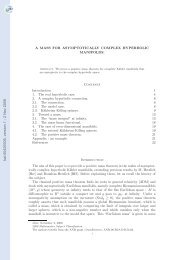
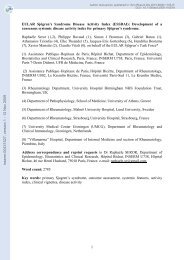
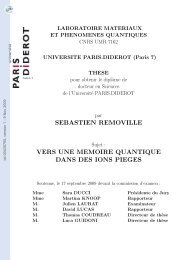
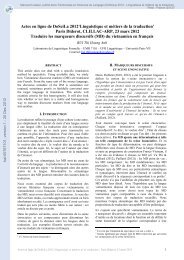
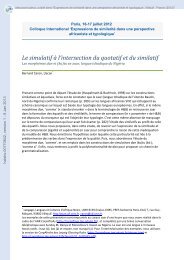
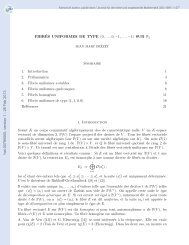
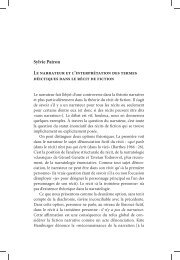
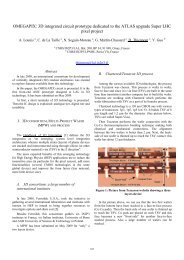
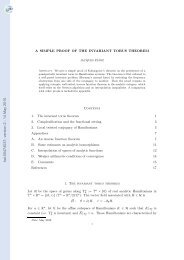

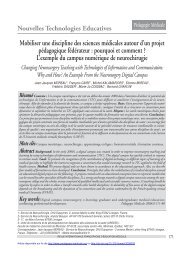

![[tel-00433556, v1] Relation entre Stress Oxydant et Homéostasie ...](https://img.yumpu.com/19233319/1/184x260/tel-00433556-v1-relation-entre-stress-oxydant-et-homeostasie-.jpg?quality=85)